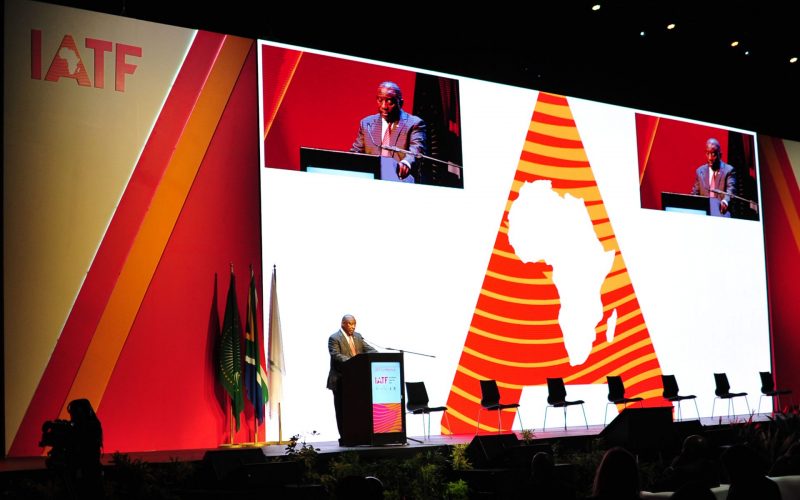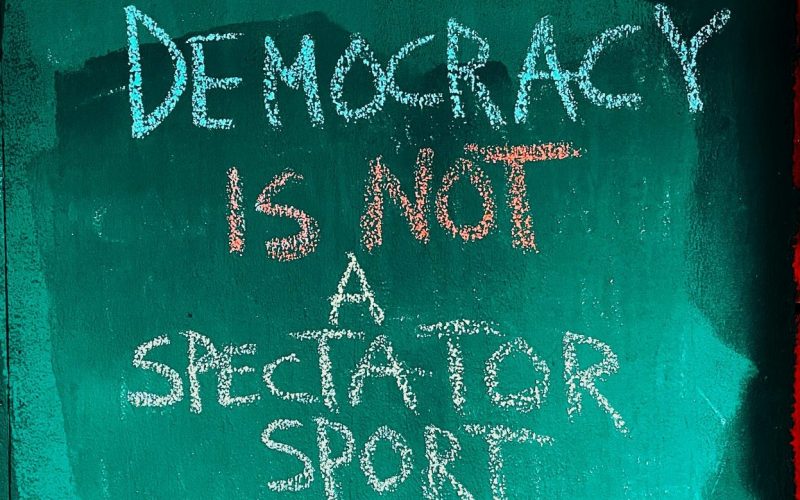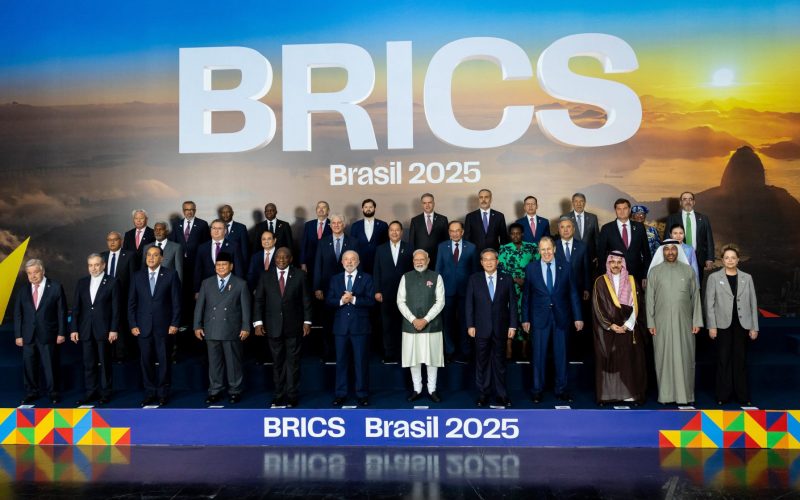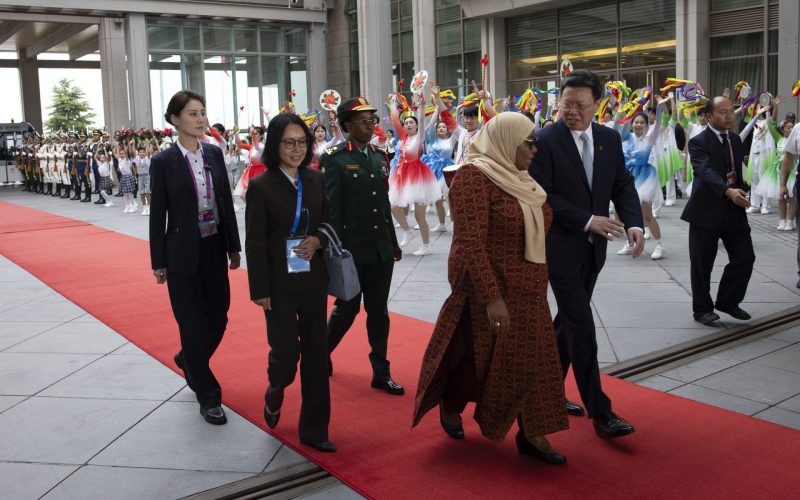Recommendations
- The Protocol on Women and Youth in Trade (PWYT) committee and its technical working groups should consider vertical equity across enterprise sizes in relation to intra-African tariff liberalisation, non-tariff measure definitions, market intelligence and training access, and trade credit eligibility. A continental Simplified Trade Regime should be annexed to the protocol and tailored to semi-formal small and informal micro enterprises in cross-border trade, with trading fees cross-subsidised by large global and continental multinationals.
- The protocol should promote digital registration and identification of trading enterprises, digital records and reports, and digital payments.
- Post-ratification review of instruments effectuating Phase 1 protocols (on trade in goods and services and dispute resolution) to ensure alignment with PWYT provisions should occur within the first five-year strategic task of the PWYT committee.
- While external funding such as official development assistance (ODA) may support initial restructuring, sustainable long-term financing should derive from common external tariffs or domestic sales taxes.
Executive summary
The African Continental Free Trade Area (AfCFTA) released its pioneering, eighth and final Protocol on Women and Youth in Trade (PWYT) in February 2024, nearly five years after the agreement’s ratification. The PWYT mandates its protocol committee to review provisions of the other protocols and related instruments – including tariff liberalisation, rules of origin, non-tariff barrier reporting, market intelligence and trade credit – to affirmatively accommodate women- and youth-led or owned enterprises.
This brief reviews the implementation frameworks and commitments of AfCFTA member states, regional economic communities (RECs) and the Secretariat to legislate, plan and fund the amended protocols to ensure gender and age inclusivity in intra-African trade. Critical challenges include the discordance between global trade standards and the small, informal nature of many women- and youth-led or owned enterprises. This can be ameliorated through continent-wide Simplified Trade Regimes (STRs), which differentiate regulatory costs by consignment value and enterprise size. However, implementation may be hindered by divergent strategic priorities, development levels and cultural biases across RECs and member states, as well as by donor funding conditions and free riding on member contributions. The brief concludes with policy recommendations on the design, data requirements, scheduling and funding of STRs and other PWYT provisions.
Introduction
The AfCFTA came into effect in May 2019 and its Secretariat, as an agency of the AU, has since released eight protocols across three phases. These include the protocols on trade in goods and services and dispute resolution (released in 2020), protocols on investment, competition and intellectual property rights (released in 2022), and the protocols on digital trade and women and youth in trade (released in 2024). The PWYT is designed to facilitate the involvement of women and youth in trading under the AfCFTA to promote their socio-economic development. This policy brief reflects on the provisions of this protocol, considering both its internal mechanisms and its interplay with the other protocols, to assess how these arrangements can be implemented in practice.
Specifically, the brief reviews the roles and responsibilities of key stakeholders, including the foundational role of national governments in legislating and institutionalising the AfCFTA provisions, and the coordinating, monitoring, and evaluating functions of the RECs and the AFCFTA Secretariat. It also outlines critical challenges associated with the protocol, notably the limited inclusion of the majority of women- and youth-led or -owned cross-border trading businesses that are informal or micro-enterprises; divergences among RECs in their recognition and treatment of women and youth in trade; and the sustainability of diverse and volatile funding sources for implementation of the protocol(s). Lastly, the brief presents recommendations for stakeholders concerning the development of a continental STR, requirements for digital registration of enterprises, the setting of timelines and milestones for implementation and the identification of sustainable funding.
Overview of the protocol
The third draft of the PWYT was released in February 2024 and is expected to enter into force upon ratification of the 21st member state. This process may be expedited when RECs ratify the protocol en bloc by virtue of their existing agreements consistent with the protocol. Amendments may be proposed to the AfCFTA Secretariat and annexures are negotiable. Following ratification, states parties are granted a five-year period to introduce or amend national policy, legislation and regulations to align with the protocol and any subsequent amendments.
The PWYT defines women- or youth-led enterprises as those in which women or youth exercise at least 25% control or management and women- or youth-owned enterprises as those with a minimum of 50% ownership. It champions affirmative action for such enterprises in respect of capacity building, technical assistance, information collection and dissemination, market intelligence and protection from harassment. To ensure consistency across all AfCFTA protocols, the insertion of an independent monitoring and evaluation mechanism, reporting through a new AfCFTA Committee on Women and Youth in Trade, is proposed. This mechanism would ensure dedicated access to non-tariff barrier reporting and dispute resolution mechanisms, the assertion of intellectual property rights and integration into digital platforms and innovation ecosystems. Furthermore, national governments are encouraged to collaborate with international development organisations to develop the administrative, institutional, fiscal and financial frameworks, along with related infrastructure.
To date, two main lines of critique have emerged regarding the PWYT. The first pertains to an institutional bias towards formal medium-size enterprises (those with 50–250 employees) and small enterprises (10–50 employees) that can afford the licensing, transaction and membership costs of conducting cross-border trade according to international standards. For informal micro-enterprises, which are typically owner-run and informal, the relevance of this protocol, particularly the simplified trade regimes, is insufficiently addressed within the protocol. The reason why the focus on formal small and medium-sized enterprises presents a challenge is because most women-controlled and women-run businesses in Africa operate as micro-enterprises in the informal sector. As such, they face considerable challenges to meet the licensing, transaction and compliance costs required for cross-border trade.
The second critique pertains to the speed and effectiveness of the protocols’ implementation processes. RECs are structurally integral to the free trade agreement, as member states are required to institutionalise the legislative and financial frameworks for ratifying and implementing the protocol’s provisions. However, the overlapping memberships of these RECs, which have diversity within and among them, can obstruct decision-making and implementation, particularly concerning the prioritisation of women-led and women-owned enterprises. The conflict arises because RECs have different trade agreements, making it challenging for countries with multiple REC memberships to harmonise commitments under the AfCFTA protocol while adhering to pre-existing regional obligations.
Implementation framework
National governments
The national governments of member states play the most important role in implementing the eight protocols of the AfCFTA and, accordingly, the integration of the provisions of the PWYT into all other components of the new intra-African trading regime being established. It is anticipated that the lead department will be the national ministry of trade (and industry), which will need to be internally restructured to provide for the new and specific requirements of the continental free trade agreement and the promotion of women and youth in trade.
Prior to ratification of the protocol(s), national ministries responsible for trade will be expected to ensure processes for consultation with all stakeholders, including traders, financiers and infrastructure providers, to develop and gazette ‘green and white’ policy papers. These policies should then be translated into actionable ministerial restructuring and broader development plans with measurable targets and defined processes. The policies and plans will be submitted to the relevant REC and the AfCFTA Secretariat for peer review, although there are no mechanisms for enforcement.
Post ratification, national ministries will need to amend existing or introduce new legislation. They will also have to review and amend associated annexures or regulations pertaining to duties and tariffs, non-tariff barriers (NTBs, such as rules of origin, sanitary and phytosanitary standards, product quality and packaging requirements, licensing conditions, quotas and bans), fiscal subsidies and preferential procurement to favoured industries. Where member states have already engaged the provisions from all current phases of the protocols (Phase I, II and III), another round of policy and legislative review is required, as well as their incorporation into ministerial strategic plans. In the actualisation of these legislative and strategic planning intentions, the PWYT refers to technical assistance, capacity building, information collection, information dissemination, market intelligence and protection from harassment as key activities to enable empowerment. However, these are not specific to women and youth, but special focus on their enterprises will be a necessary corollary. Thus, in addition to augmenting these ministerial functions to meet the generic requirements of the AfCFTA, they will also have to enable affirmative action for women and youth-controlled enterprises. This generates additional funding requirements and new budget lines to fund additional posts, units and agencies.
Regional economic communities
The primary purpose of RECs is to liberalise tariffs and standardise non-tariff barriers for intra-regional trade, implement a common external tariff as progress towards a customs union, dismantle controls on migration to form a common market and ultimately harmonise monetary and fiscal policies to effect monetary union. This is in accordance with the AU’s Agenda 2063 and the RECs are the legally embedded agents of this unifying trajectory.
The eight recognised RECs differ in terms of their political focus, aspirations and capacity to effect an economic union. ECOWAS and the Economic Community of Central African States (ECCAS) are more concerned with matters of defence and security. The Common Market of Eastern and Southern Africa (COMESA) emphasises mutual investment, while SADC and the Intergovernmental Authority on Development (IGAD) adopt a more generic stance on socio-economic development. The Community of Sahel Saharan States (CEN-SAD) is incipient and aspires only to be a free trade agreement. The Arab Maghreb Union (AMU) is essentially dormant.
Within each of the more established RECs (EAC, ECOWAS, ECCAS and SADC), the original core members are generally further along the path towards either customs or monetary unions than some of their newer members. Perhaps in anticipation of forthcoming continental integration, cross-joining and acceptance of nation-states into multiple regional trading blocs accelerated during the two decades preceding the signing of the AfCFTA. With specific reference to mainstreaming gender equity, such considerations are included within the founding principles of the five primary RECs, but not in the incipient ones (IGAD, CEN-SAD and AMU) that predominate in the northern and more patriarchal societies of the continent.1Modesta Nsowaa-Adu and Elisa Fornalé, “Negotiating Towards a Tailor-Made Gender Protocol Under the AfCFTA: Could Integrating Africa’s Fragmented Gender Chapters Be the Key?”, in Making Trade Work for Women: Key Findings from the 2022 World Trade Congress on Gender, World Trade Organization, 2023. Thus, both internally and externally, the capacity and performance of the RECs in harmonising tariff rates and non-tariff regulations, facilitating trade finance, mediating disputes and affirmatively promoting women and youth in trade is widely variable, sometimes contradictory and in need of guidance and incentive from continental authorities.
AfCFTA Secretariat
The AfCFTA Secretariat has, to date, operationalised online tools for member states and RECs that collect and disseminate data on, enable product identification and enterprise registration for and inform negotiations around (a) rules of origin, (b) tariff reduction schedules for standard and sensitive goods, plus exclusions, (c) listing of non-tariff barriers, and (d) market intelligence through the African Trade Observatory. The Secretariat has also been instrumental in establishing (e) Afreximbank and the Pan-African Payments and Settlement System (PAPSS), which enables direct domestic currency conversions and (f) the AfCFTA Adjustment Fund, which compensates member states for the progressive loss of intra-African tariff revenue through grants and technical assistance and enables enterprises to scale up with concessional and conventional loans.
With respect to the PWYT, the AfCFTA Secretariat will establish a separate monitoring and evaluation mechanism (additional to the existent one on NTBs) that reports to a new Committee on Women and Youth in Trade (in addition to the Committee of Senior Trade Officials and the Council of Ministers). This new mechanism will ascertain access to all the current operational tools indicated above, the dispute resolution mechanism and any future facility to enable digital trade in services, intellectual property registration and investment facilitation more inclusively.
Key challenges
Inclusivity of enterprise type
The PWYT explicitly extends its remit to include small and medium-sized businesses. The World Trade Organization (WTO) uses a simple definition of medium-sized enterprises as those employing 50–250 people, small-sized businesses as those employing 10–50 people and micro-enterprises as those employing fewer than 10 people.2World Trade Organization, Examining MSMEs’ Composition and Participation in International Trade through Meta Survey Data, MSME Research Note No. 4 (WTO, 2024), 5. To engage in international trade, businesses generally need to reach a certain size to generate sufficient revenue to afford registration and licensing fees. In addition, they need to comply with rules of origin and other technical barriers to trade, possess the collateral or guarantees necessary to access trade finance, report on financial transactions and operational performance and pay customs and excise duties, among other costs. This remains true even under the most simplified trade regime.
Mostly, self-employed entrepreneurs and micro-enterprises do not have the financial and human capital to legally engage in cross-border trade. Furthermore, for many formally registered firms, partial engagement in informal and often illicit activities (such as mis-invoicing and under- or over-declaration on higher- and lower-tariffed products, respectively) is prevalent, particularly among small- and medium-sized enterprises. The UN Economic Commission for Africa (UNECA) estimates that between 7% and 16% of intra-African cross-border trade is informal whether by unregistered micro-enterprises or by formal small- and medium-sized ones.3Edwin Gaarder, David Luke and Lily Sommer, “Towards an Estimate of Informal Cross-Border Trade in Africa” (ECA, 2021), 5.
UNECA also estimates that 70% of informal cross-border trade in Africa is undertaken by women, although men predominate in North and Central Africa.4Bereket Alemayehu, “The AfCFTA Protocol on Women and Youth in Trade: An Anchor of Inclusive Trade and Development”, ECA Blog (October 17, 2024). By contrast, only 17% of Facebook Business users in Africa and the Middle East engaging in trade were women-owned.5WTO, Examining MSMEs’ Composition, 12. This illustrates both the gendered digital divide and the predominance of women in informal business and trade. While there is a paucity of data available on the engagement of youth in trading enterprises, it is generally accepted that youth are disproportionately employed in or owners of informal and micro-sized enterprises, and that they are more likely to be engaged in international trade.6WTO, Examining MSMEs’ Composition, 14. While the PWYT explicitly recognises informal cross-border trade (ICBT) and simplified trade regimes as an operational requirement in its preamble – and proposes a definition of women- or youth-led or owned enterprises that implicitly acknowledges most will be informal micro-businesses – it offers little guidance on how these STRs should be designed.
Need for a functional continent-wide Simplified Trade Regime
STRs have been devised with the regularisation and affordability of informal cross-border traders in mind. Low consignment values of listed products are granted tariff exemption with simpler, cheaper customs clearance enabled by basic rules of origin (RoO) and sanitary and phytosanitary standards (SPS) certification. The initiative was introduced by COMESA in 2010, with applications on a country-by-country basis. The COMESA STR is available to registered traders transacting consignment values of less than $2,000, the assumed maximum amount transportable by a single vehicle, and thus also by animal- drawn cart, bicycle or on foot. Eligible product lines are based on the range of goods typically traded informally, which are mostly food products, fuel and household items.
The fee for RoO and SPS documentation ranges from $1 to $20 per consignment.7Mwangi Gakunga, “Time to Reform the COMESA Simplified Trade Regime”, COMESA News, August 9, 2024. Over time, the increasing burden of documentation and application costs has disincentivised the utilisation of this facility. In 2017, SADC accepted a proposal to introduce an STR aligned with that of COMESA to accommodate joint member states. While ECOWAS has no formal STR in place, ICBT is effectively tolerated through benign neglect, allowing trade to occur regardless of customs clearance validity.
Rec (dis)intermediation
As of March 2024, and in accordance with the Protocol on Trade in Goods, 45 of 53 member states have submitted their schedules of tariff concession on 90% of line items due within five to 10 years.8Gerhard Erasmus, “AfCFTA Update: Current Status and Next Steps”, Trade Unions and Trade in Africa, March 5, 2024. An implicit extension has been granted to these submitters to identify their sensitive and excluded product lines. Finalising the regulatory conditions for de-tariffing intra-African trade in goods is expected to take a further five years, followed by at least 13 additional years before duty-free trade on 97% of tariff lines is fully implemented across the continent. At this juncture, it will be feasible to introduce a common external levy and institutionalise the African Customs Union. A similar timeframe for preparing for and implementing the Protocol on Trade in Goods will be required for the protocols on trade in services, investment, intellectual property, digital trade and women and youth in trade.
Traders have a choice between using the AfCFTA tariff offer or that of one of the relevant RECs to which the country of residence or citizenship of the trader belongs. Especially with respect to sensitive and excluded line items, the opportunity for traders to arbitrage between different tariff (and NTB) regimes might incentivise divergence between some REC regimes and that of the AfCFTA and thereby delay implementation further. This loophole may be particularly relevant in the application of the PWYT where the looser, incipient and/or more security focused regional trading blocs (in North and Central Africa) can be expected to be slower to act affirmatively in favour of women-led or controlled trading enterprises.
Funding sustainability
The AfCFTA Secretariat is an agency of the AU and generates roughly 1.3% of its revenue while its spending constitutes 1.1% of the total. In 2022, the AU derived nearly two-thirds of its revenue from development partners, primarily the EU and a range of UN agencies. The AfCFTA itself has received technical assistance and funding from the African Development Bank, the World Bank, Afrexim Bank and several UN agencies.
The multiplicity of donors with different conditionalities can lead to a loss of coherence in meeting the mission and the scheduling of activities.9AU, Board of External Auditors, Consolidated Financial Statements for the Year Ended 31 December 2022 (26 May 2023) https:// au.int/sites/default/files/documents/43203-doc-2022_AU_Consolidated_Final_Audit_Report_and_financial_statements_E_Signed-merged-1.pdf Most importantly, donors consider ODA dispensable when faced with their own challenges such as security or economic crises. The resultant volatility of funding flows creates an environment in which strategic planning and progressive implementation of ‘global public goods’ such as the AfCFTA apparatus is challenging and susceptible to threats.
The remaining one-third of AU funding is derived from member contributions, sourced from general government revenue and based on each member state’s contribution to African GDP. Partial or non-payment of membership contributions is persistent and has led to increasing – rather than diminishing – reliance on donors, contrary to original plans.10 10Kesa Pharatlhatlhe and Jan Vanheukelom, “Financing the African Union: On Mindsets and Money” (Discussion Paper No. 240 European Centre for Development Policy Management, February 2019).
The RECs are also funded from a mix of member contributions and ODA and face the same problems of member free-riding and the volatility of aid flows. Member contributions, though, generally constitute the bulk of REC funding and are often based on a percentage of the value of a nation-state’s imports. At national level, the ministries and departments responsible for trade are generally allocated a budget from general government revenue, the baseline of which will need to be incrementally supplemented to institutionalise the AfCFTA protocols and facilitate intra-African trade. Some governments might direct revenue from international trade taxes (ie, tariffs including customs and excise, duties and levies) to spending on publicly grant-funded trade services, such as those specified above, to implement the AfCFTA protocols (and those facilitating extra-African trade).
Extended recommendations
Given the challenges outlined above, action need to be taken to ensure that the PWYT achieves its desired objectives. Accordingly, the following measures are recommended.
- Address inclusivity concerns for informal and micro-enterprises
All public service functions enabling intra-African trade through the AfCFTA, and particularly the PWYT, should be disaggregated according to enterprise size and scope. Large enterprises with global coverage reach that engage in extra-African trade – potentially enabled through multilateral or bilateral preferential trade agreements or economic partnerships – should be distinguished from large African multinationals dependent on intra-African trade. The principle of vertical equity suggests that these enterprise types should be net contributors to tariff revenue collection. Differentiating enterprises by size and scope, particularly under the principle of vertical equity, ensures a fairer distribution of trade-related costs and benefits.
Medium-, small- and micro-sized enterprises should be classified as formal, semi- formal and informal, respectively. Medium-sized firms should be fully registered to trade according to minimum WTO standards and expected to cover the costs of the services they receive. Small-sized firms, while often formally registered, may also engage in informal activities as a strategy to reduce trading costs in response to low and unpredictable revenues. Micro-enterprises are the most likely to operate informally and remain unregistered. While the registration of micro-enterprises and informal businesses is often pursued to maximise revenue collection, the survivalist nature of these businesses suggests that costs should be substantially subsidised to facilitate the inclusion of enterprises predominantly led or controlled by women and youth.
This four-tiered system of cross-subsidising trade service provision should apply to (1) premiums or discounts on tariffs, (2) the stringency of origin, safety and technical standards, (3) availability of capacity building and information services, (4) access to short- term trade credit and longer-term investment finance and (5) protection of markets and assets. In comparison with existing STRs, this proposal distinguishes small and micro- enterprises in relation to tariff-free consignment values, registration and administrative costs, and affirmative action in accessing public trade services. By ensuring that smaller enterprises are net beneficiaries of the system, incentives to formalise, as well as the capacity to distinguish and measure legitimate versus illicit activities, are strengthened. This design principle of disaggregation, specification and cross-subsidisation by enterprise size and coverage should apply at the member state, REC and AfCFTA levels and should therefore be included in future amendments or appendices to the AfCFTA protocols.
- Develop robust monitoring and evaluation mechanisms
Given that applying vertical equity may complicate the administration of trade service provision and revenue collection, digital registration of enterprises, individuals and their transactions can be designed to collect all the data necessary to monitor, evaluate and analyse the performance of registered traders. For full implementation of the PWYT, enterprise registration should specify the gender and age composition of owners, managers, workers and contractors. To build capacity and enable comparison between traders, standardised annual financial statements and annual reports detailing input, output and outcome performance data should be required of all enterprises, with the detail tailored to the size and sophistication of the enterprise. The AfCFTA Secretariat is best positioned to collect and collate the data needed to assess compliance with the provisions of the agreement’s protocols; to monitor, evaluate, analyse and disseminate information and market intelligence; and to organise negotiations and resolve disputes that may arise between member states, RECs and continental and global trade authorities.
- Establish clear timelines and milestones for ratification and implementation
Agenda 2063 proposed an overly ambitious stretch target of 2023 for the establishment of an African Customs Union, Common Market and Monetary Area.11AU, Key Transformational Outcomes of Agenda 2063, AU Webmail, accessed February 24, 2025, https://au.int/en/agenda2063/ outcomes. As indicated above, progress to date – albeit constrained by COVID lockdowns in 2020 – suggests that a full customs union is likely at least a generation away, possibly around 2045. This remains a stretch target, particularly if the implementation of other protocols proceeds at a similar pace to that of the trade in goods protocol. Assuming the differentiation of trade-related costs and distribution of benefits by enterprise size and degree of women and/or youth ownership is considered necessary to execute the PWYT, the amendment of policies, contracts, legislation, funding channels and implementation plans are likely to extend the timeline further.
In preparation, the AfCFTA Committee on WYT should consider amending the PWYT to allow for the establishment of preferably two tiers of STRs across all RECs, or continent- wide without regional mediation – one tier for micro and the other for small-sized enterprises. In 2024, COMESA, the EAC and SADC began piloting a tripartite STR with a common list of exempted products and less onerous origination requirements. Any such amendments or annexures to the protocol may be well-timed to coincide with the enactment of the upcoming second round of service trade offers, which include the distribution sector under which ICBT is sub-categorised. 12The first round of PTIS offers covered the financial, communications, transport and tourism industries, while the second round also includes education and construction.
Once the PWYT is amended, the Committee on WYT may want to call for a revision of the origination rules for small and micro enterprises, the introduction of discounts or exemptions on sensitive and excluded goods and services traded, the definition of non- tariff barriers by enterprise size and ownership demographics and the utilisation of the dispute resolution mechanism to clarify any legal anomalies. A five-year timeline for these (Phase I) amendments and revisions could be considered a realistic stretch target. A similar timeframe may also be proposed for the necessary review and adjustment of the remaining Phase II protocols. This would structure competition within a segmented market, simplify the rules governing cross-border investment, promote affirmative action to enable women- or youth-led and controlled enterprises to integrate into innovation ecosystems and secure IP rights and digitally registration – particularly for cross-border e-commerce.
- Ensure sustainable funding sources for WYT initiatives
The benefit principle of taxation asserts that revenue collected from a sector, industry, occupation or activity should be redirected into spending that benefits or counters the externalities generated by that same component grouping as closely as possible. Generally, this principle runs counter to exploiting scale economies in tax collection and government budget disbursement. In the case of trading, for example, revenues generated from tariffs and other fees should be channelled into trade facilitation rather than absorbed into the general revenue pool. For nation-member states, this implies that the budgets of trade ministries should primarily be funded from international trade taxes.
Where such revenue is insufficient for operational purposes, the gap may be bridged through VAT or domestic sales taxes.
For low- and lower-middle-income countries, ODA may be sought to cover capital and capacity-building costs. With specific reference to intra-African trade, given the anticipated loss of tariff revenue as well as the additional capital and operating costs of implementing the AfCFTA and its PWYT, the shortfall may be addressed through higher common external tariffs, increased domestic sales tax rates or improved collection efficiencies. Member state transport ministry budgets should cover REC membership fees and those of the AfCFTA Secretariat which, in turn, should rely on a bespoke membership levy to finance its operational costs. ODA and other donor grants can be used to capitalise and build the capacity of both the RECs and the AfCFTA Secretariat.
Conclusion
The AfCFTA is the world’s first trading agreement that explicitly recognises and concretely institutionalises affirmative action in promoting women and youth enterprises in cross- border, intra-continental trade. The AfCFTA Secretariat’s PWYT Committee could be empowered in both detailing the protocol’s provisions and guiding the other protocol committees by differentially analysing each mechanism according to enterprise size, with STRs that foster small and micro-size enterprises, most of which are women- or youth- led. The institutional capacity building and restructuring required of nation states, RECs and the AfCFTA Secretariat can be activated through multilateral and donor funding, but should work towards operationally sustainable funding through the redirection of common external levy revenue from extra-African trade to cross-subsidise the promotion of intra-continental trade, especially by smaller and women- or youth-led enterprises.









